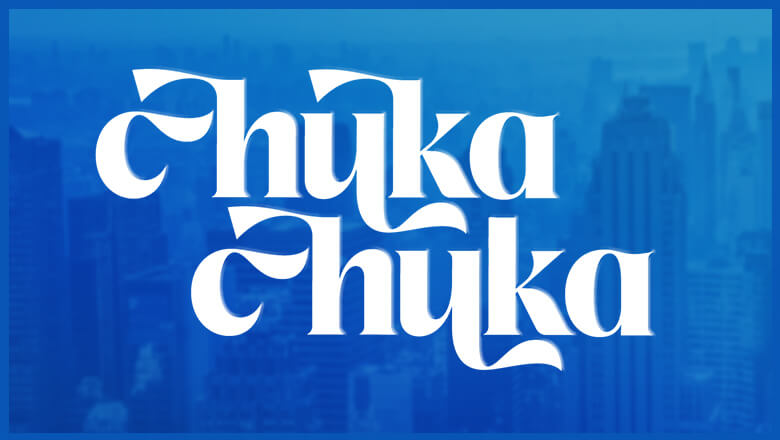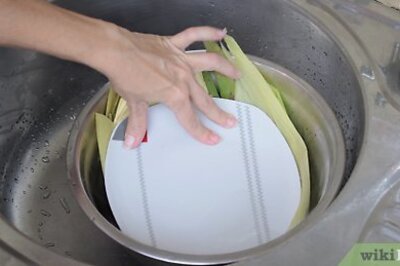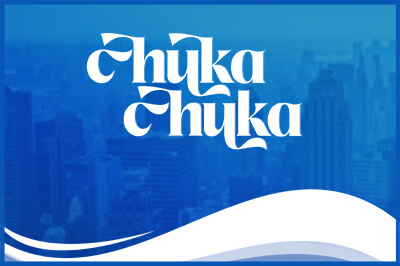
views
What are capped shoulders?
Capped shoulders are large, round, and well-defined deltoid muscles. Capped shoulders, which are also commonly called cannonball delts or bowling ball delts, refer to large, round, and muscular shoulders that are well-defined from the other arm muscles. The shoulders have a 3D look, which is achieved by working out the entire shoulder muscle (aka deltoid). This includes the anterior (front) deltoid, medial (side) deltoid, and posterior (rear) deltoid, says personal trainer Dean Theriot. Meet the wikiHow Experts Monica Morris is an ACE-certified personal trainer with over 15 years of fitness training experience. Dean Theriot is a personal trainer and owner of Timberline Fitness with over 25 years of fitness training experience. Souad Gharib is an exercise and wellness specialist who specializes in personal training for women. Pete Cerqua is a certified personal trainer with over 20 years of personal training and nutrition coaching experience. Capped shoulder examples: Arnold Schwarzenegger, Dwayne “The Rock” Johnson, Dwight Howard, Felice Herrig, Florence Griffith-Joyner.
Top Exercises to Get Capped Shoulders
Lateral raises According to Morris, lateral raises are one of the best exercises to get capped shoulders. This exercise strengthens your lateral and anterior deltoids, as well as the trapezius muscle on your back. To do lateral raises, Theriot says to: Stand up straight and pull your shoulders down and back. Hold a pair of lightweight dumbbells at your sides with your palms facing you and your elbows slightly bent. Tighten your core and raise the dumbbells out to your sides in a straight line, leading the movement with your elbows. Stop when the dumbbells are about shoulder level and hold them there for 2 to 3 seconds. Lower your arms down and back to the starting position. Repeat for 3 sets of 8 to 15 reps.
Upright rows Morris also highly recommends doing upright rows to get bulging and rounded capped shoulders. This exercise works the anterior, lateral, and posterior deltoids, as well as the traps and biceps. While we’ll show you how to do upright rows with dumbbells, you can also do them with a cable machine if you prefer. To do the exercise: Stand up straight, roll your shoulders back and down, and keep your feet about shoulder-width apart. Grab a pair of dumbbells and hold them in front of your thighs with your palms facing you. Tighten your core and raise your elbows upward at your sides until the dumbbells are at about chest height. Squeeze your shoulder blades together and hold the dumbbells in the raised position for 1 to 2 seconds. Lower your elbows and return to the starting position. Repeat for 3 sets of 8 to 15 reps.
Shoulder press Certified personal trainer Jason Whalen says the shoulder press is a great exercise for building shoulder muscles. The shoulder press works out your anterior, lateral, and posterior deltoids, as well as your triceps and traps. We’ll explain how to do this exercise with dumbbells, but you can also use a barbell or a machine. To do a shoulder press: Sit up straight on a bench set to a very slight incline. Grab a pair of dumbbells and hold them on top of your shoulders. Tuck your elbows into your sides, tighten your core, and push the dumbbells straight up over your head, squeezing your shoulders together. Slowly lower the dumbbells, either holding them at chin level or returning them to the starting position so they’re touching your shoulders. Repeat for 3 sets of 8 to 15 reps.
Overhead press Theriot agrees that the overhead press is excellent for strengthening all 3 parts of the delts, as well as your traps, triceps, and chest. This exercise is very similar to the shoulder press, just with a slight change in your arm position. To do the overhead press: Sit up straight on a bench set to a slight incline. Grab a pair of dumbbells and hold them out at your sides with your elbows bent and palms facing out. Keep the dumbbells about shoulder height. Contract your core and press the dumbbells upwards until your elbows are completely straight. Slowly lower the dumbbells and return to the starting position. Repeat for 3 sets of 8 to 15 reps.
Front raises Exercise and wellness specialist Souad Gharib says front raises are one of her go-tos for building stronger shoulders. It primarily targets the anterior delts, making it a great isolated exercise. To do front raises: Stand up straight, roll your shoulders back and down, and position your feet a bit wider than hip-width apart. Hold a pair of light dumbbells in front of your thighs with your palms facing you. Contract your core and raise the dumbbells straight in front of your body, leading with your elbows. Stop when the dumbbells are about shoulder height and hold the position for 1 to 2 seconds. Lower your arms back down to the starting position. Repeat for 3 sets of 8 to 15 reps.
Rear delt raises Another great exercise for developing capped shoulders is the rear delt raise, says Morris. As the name implies, it primarily strengthens the posterior deltoid muscle. To do rear delt raises: Sit down on a bench and lean forward at a 45° angle, keeping your back straight. Grab a pair of lightweight dumbbells and hold them by your sides with your palms facing you. Tighten your core and raise the dumbbells straight out to the sides, leading the movement with your elbows. Stop when the dumbbells get to about shoulder height and hold the position for 1-2 seconds. Lower your arms and return to the starting position. Repeat for 3 sets of 8 to 15 reps.
Bent over rows While bent over rows primarily target your traps, they also work your posterior delts to help your shoulders appear wider and bigger. To do a bent over row: Stand with your feet about shoulder width apart and roll your shoulders back and down. Bend your knees slightly and lean forward at the hips so your upper body is at a 45° angle to the floor. Keep your back straight. Grab a pair of weights and hold them in front of your knees with your palms facing each other. Tighten your core and lift your elbows backward, keeping your arms close to your body. Stop when the dumbbells reach your abdomen. Lower your arms and return to the starting position. Repeat for 3 sets of 8 to 15 reps.
Reverse flys Certified personal trainer Julian Arana, M.S.eD., NCSF-CPT says reverse flys are excellent for strengthening and widening your shoulders. They target your posterior delts, as well as your upper back. To do reverse flys: Set the backrest of a bench to a 45° to 60° angle. Then, sit on the bench facing the backrest and plant your feet on the floor. Hold a pair of dumbbells straight down in front of you with your palms facing each other. Contract your core and raise the dumbbells straight out at your sides, keeping your arm, elbow, and dumbbell in line. Stop when the dumbbells reach your shoulders and squeeze your shoulder blades together. Lower your arms back to the starting position. Repeat for 3 sets of 8 to 15 reps.
Face pulls Face pulls are a cable machine exercise that works your rear delts, says Morris. To do a face pull: Position the cable about chest high and add a rope attachment. Grab the rope and take a few steps back. Stand up straight, roll your shoulders back and down, and place your feet about shoulder width apart. Tighten your core, bend your elbows, and pull the rope towards your face, keeping your elbows higher than your wrists. Squeeze your shoulder blades together for 1 to 2 seconds. Push your arms straight in front of you and return to the starting position. Repeat for 3 sets of 8 to 15 reps.
Arnold press Morris says that the Arnold press is another great shoulder exercise that helps you build big, capped shoulders. It targets all 3 parts of the deltoid, as well as your traps and triceps. To do an Arnold press: Adjust a bench so the backrest is at 90°. Sit on the bench with your back straight and feet planted on the ground. Then, roll your shoulders back and down. Grab a dumbbell in each hand and hold them in front of your chest with your palms facing you so your elbow makes an “L” shape. Press the dumbbells upward to about forehead height. Then, rotate your elbows out to the sides and lift the dumbbells fully over your head. Lower the dumbbells and return to the starting position, rotating your elbows back in front of you when they reach your forehead. Repeat for 3 sets of 8 to 15 reps.
Pushups Theriot explains that pushups are a great way to work out your deltoids and grow your shoulder muscles, especially if you don’t want to use weights. They’re an excellent compound exercise that also strengthens your chest, triceps, and core. To do a pushup properly, fitness trainer Laila Ajani says to: Get into a plank position. Lie on your stomach and place your palms under your shoulders. Extend your arms all the way to lift yourself up, press your toes into the ground, and keep your back straight and in line with your hips. Tighten your core and bend your elbows to lower yourself to the ground. Make sure to keep your back, hips, and legs straight and in line with each other. Stop when your chest is just above the floor. Push yourself back up, straightening your arms, to return to the starting position. Repeat for 3 sets of 8 to 15 reps.
Inclined chest press The inclined chest press works your anterior deltoid muscles while also targeting your chest and triceps. To do the exercise, get a spotter to help you. Then: Set the backrest of a bench to a 45° to 60° angle. Lie back on the bench with your back straight and feet planted on the floor. Roll your shoulders back and down. Grab a pair of dumbbells and bend your elbows 90° at your side, holding the dumbbells level with your chin and your palms facing away from you. Lift the dumbbells straight up, keeping your arms straight. Lower your arms and bend your elbows, returning to the starting position. Repeat for 3 sets of 8 to 15 reps.
How to Grow Your Shoulder Muscles
Work out your shoulders 1 to 2 times per week. Getting capped shoulders is all about consistently working out your deltoid muscles. So, aim to do shoulder exercises that hit each part of the deltoid once or twice per week. Just let your shoulders rest for at least 24 hours before working them out again. On days you’re not working out your shoulders, focus on your chest, arms, legs, or abs. If you’re new to working out, Morris recommends splitting your workouts into upper-body days and lower-body days. Then, split your workouts into push days (chest, triceps, shoulders), pull days (back, biceps, rear deltoids), and leg days. To get visible and defined capped shoulders, it’s also important to lose excess fat and get down to a lower body fat percentage. So, add cardio to your workouts to help burn calories and define your muscles.
Warm up to prevent injury. Doing light warm-up exercises prepares your shoulders for their workout, which can help reduce your risk of injury. Morris recommends starting with some static upper body stretches. Then, she says to move into some dynamic stretches that increase your heart rate, like arm swings, jumping jacks, or high knees. Certified personal trainer Pete Cerqua says a good warm-up can also involve exercising with a lighter set of weights. For instance, if you’re planning on doing shoulder presses, start with a set using a weight you can easily lift to prepare your muscles for the movement and the heavier weight.
Lift heavier weights gradually. To build big, strong muscles, use weights that are a challenge to lift at the end of your reps for an exercise. Once that weight becomes easy to lift, increase the weight by just a little bit so it’s difficult again. Cerqua agrees, saying, “If you can get 12 reps easily with a weight, then it's time to move the weight up a little bit.” Don’t sacrifice your form for heavier weights, though. Certified personal trainer Errol Ismail says that “shoulders are notoriously problematic and easily injured,” which is why it’s especially important to do each exercise properly. To stay safe, he recommends that you “increase weight slowly, making sure you can control it on the way down.”
Eat a balanced diet of protein, carbohydrates, and healthy fats. Diet is a huge part of building more muscle, says certified personal trainer Danny Gordon. He recommends getting at least 0.8 grams of protein per kilogram you weigh (or 0.36 grams per pound) and prioritizing lean proteins like chicken, tuna, soy beans, and eggs. Carbs are another key component, giving you the energy you need to work out. Gordon suggests healthy carbs like whole grains (pasta, brown rice), vegetables, and fruits. Healthy, unsaturated fats like avocado, nuts, seeds, and olive oil are another important addition to your diet. To help you meal plan, Cerqua suggests making each meal about 50% protein, 40% carbs, and 10% healthy fats. He says this ratio is what's needed for building muscle and burning fat.
How long does it take to get capped shoulders?
It can take 2 years or more to grow large, capped shoulders. According to Gharib, “If you’re training consistently and eating enough protein, you’ll start seeing small [muscle] changes in 4 to 6 weeks.” She adds that “bigger transformations take time,” often 2 to 3 years of dedicated work, so “be patient and trust the process!” People who take anabolic steroids often experience quicker shoulder growth, as the shoulder and trapezius muscles are more affected by the steroids (i.e., they contain more androgen receptors for the steroids to bind to). So, don’t feel bad if it seems like other people are making faster progress.
Are capped shoulders genetic?
Capped shoulders can be built naturally, but genetics do help. At its core, getting capped shoulders comes down to working out all 3 parts of the deltoid muscle consistently and eating a high-protein diet. However, how big your shoulders get might be due to your genetics. Some people simply have the DNA to grow bigger muscles, while others have greater limitations on the amount of muscle they can build. For instance, while consistent diet and exercise over several years can definitely achieve rounded, defined, and muscular shoulders, some people might not be able to get the bowling ball look of professional bodybuilders like Arnold Schwarzenegger.


















Comments
0 comment